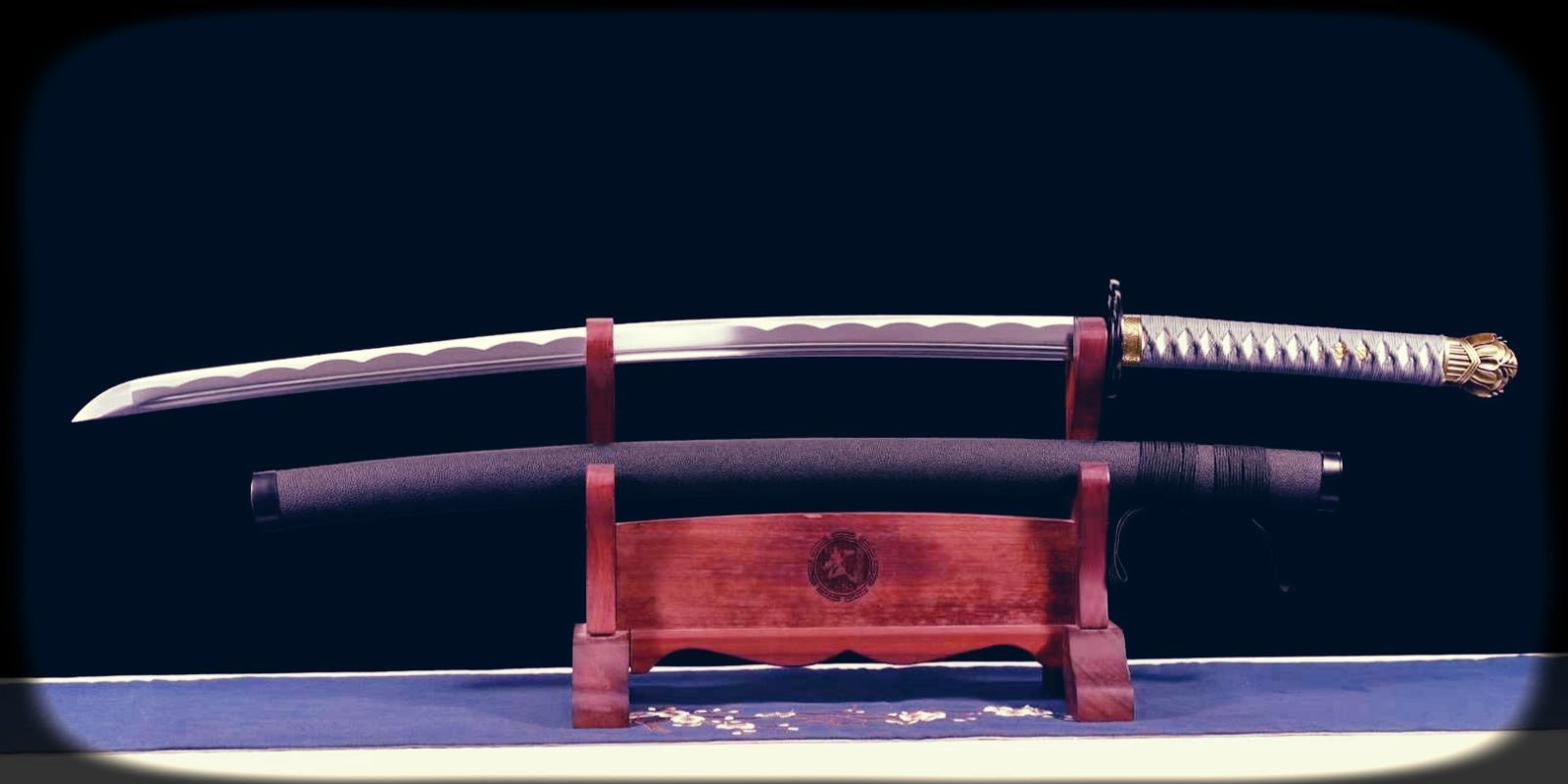Introduction to the Fuchi: A Vital Component of the Katana
The fuchi, an essential aspect of katana design, plays both an aesthetic and functional role in traditional Japanese sword craftsmanship. Situated at the base of the tsuka (handle), the fuchi anchors the transition between the blade and the hilt. Crafted from durable materials such as steel, copper, or brass, its purpose extends beyond mere decoration.
Its design ensures structural integrity by reinforcing the connection between the tsuka and tang of the blade. This feature enables the sword to maintain balance during use. Additionally, the fuchi often showcases intricate engravings that represent cultural symbolism, enriching the katana's artistic appeal and historical significance.
Historical Significance of the Fuchi in Swordsmithing
The fuchi, a metal collar located at the base of a katana handle, holds immense historical significance within the art of Japanese swordsmithing. In feudal Japan, the fuchi was more than a utilitarian component; it conveyed the status, wealth, and cultural identity of the samurai wielding the sword. Elite craftsmen carefully designed this piece, adorning it with intricate carvings, inlays, and engraved motifs that often reflected regional aesthetics, familial crests, or spiritual symbols.
Over time, the fuchi evolved, adapting to stylistic changes across periods such as Kamakura, Muromachi, and Edo. Its importance extended to the preservation of balance, ensuring harmony between blade and handle for optimal functionality in combat.
Anatomy of a Katana: Where the Fuchi Fits In
The katana, an iconic symbol of Japanese craftsmanship, consists of several meticulously designed components. Among these, the fuchi plays a critical role in maintaining both the structural integrity and aesthetic balance of the sword's hilt. Positioned at the junction between the handguard (tsuba) and the handle (tsuka), the fuchi acts as a collar, ensuring a smooth transition between the two.
Typically made of metal such as iron, copper, or an alloy, the fuchi ensures the tsuba and tsuka fit securely together, preventing any loosening during use. Its decorative motifs often reflect cultural themes or the artisan's personal expression, adding to the katana's uniqueness.
Materials and Craftsmanship Behind the Fuchi
The fuchi, a narrow metal collar on a katana's hilt, showcases a harmonious blend of artistry and utility. Its construction demands careful material selection to ensure durability, aesthetics, and functionality. Traditional fuchi often feature high-quality alloys such as shakudō (a mix of gold and copper), shibuichi (a blend of silver and copper), or pure iron, rendering them both robust and visually striking.
Craftsmanship involves meticulous techniques, including forging, engraving, and patination. Master artisans utilize specialized chisels and hammers to engrave intricate designs, often reflecting nature, mythology, or samurai culture. These detailed carvings are further enhanced using chemical treatments to achieve distinct color contrasts and textures, adding artistic depth.
Symbolism and Aesthetics of the Fuchi Design
The decorative motifs on the fuchi often carry profound symbolic meaning, reflecting cultural philosophies, historical narratives, or personal identity. Popular designs include motifs from nature, such as cherry blossoms, autumn leaves, or waves, symbolizing transient beauty, change, and resilience, respectively. Mythological figures, dragons, or phoenixes may also appear, representing power or rebirth.
Artisans extensively use traditional Japanese metalworking techniques like inlay, relief carving, and patination to create intricate patterns. The interplay of darkened patinas and polished highlights adds depth and contrast, enhancing its visual appeal. The choice of materials—such as shakudo, shibuichi, or gold—contributes to both the symbolic resonance and tactile beauty of the finished piece.
How the Fuchi Contributes to Balanced Functionality
The fuchi, a metal collar fitted at the base of a katana’s handle, ensures structural integrity and balance. Its primary role is to fortify the connection between the blade’s tang and the tsuka (handle), preventing movement during usage. By distributing force evenly across the handle, the fuchi aids in maintaining control and precision.
Meticulous weight distribution is crucial for a katana’s performance, and the fuchi plays a subtle yet indispensable role in achieving this balance. Additionally, its sturdy material safeguards the wooden core of the handle from cracking under stress. This seamless fusion of strength and refinement enhances the blade’s overall usability and longevity.
The Fuchi’s Role in Strengthening the Tsuka (Handle)
The fuchi serves as a critical structural element in the katana’s tsuka. Positioned between the blade tang and the handle wrapping, it reinforces the tsuka by preventing stress fractures and ensuring durability during rigorous use. By encasing the wooden core and securing it against slippage, the fuchi enhances the integrity of the grip, offering balance and stability. Its snug fit distributes force impact evenly, protecting other components, such as the menuki and mekugi, from undue strain. Traditionally constructed from durable metals like iron, copper, or alloy, the fuchi also helps maintain the katana’s ergonomic design and handling precision.
Fuchi vs Other Katana Fittings: Understanding Its Unique Role
The fuchi serves as a critical anchor point within katana fittings, distinctively framing the junction where the blade connects to the handle. Unlike other fittings, such as the kashira or tsuba, which primarily offer ornamental or protective roles, the fuchi’s primary function lies in mechanical stability. It reinforces the sword’s grip, ensuring the tsuka-ito (handle wrapping) seats firmly to prevent loosening during use.
Other fittings, including menuki and seppa, contribute aesthetic detail or balance adjustments but do not directly enhance structural integrity. This makes the fuchi indispensable for maintaining durability and precise craftsmanship in a katana’s construction.
Maintaining and Preserving the Fuchi and Katana Fittings
Proper maintenance of the fuchi and other katana fittings is vital to retain their functional and aesthetic value. These elements are prone to wear, corrosion, and discoloration over time if neglected. Regular cleaning with non-abrasive materials, such as soft-bristled brushes or lint-free cloths, prevents residue build-up. Applying a thin layer of protective oil shields the metal from moisture and oxidation.
Store the katana in a controlled environment to minimize temperature and humidity fluctuations. Inspect fittings periodically for looseness or damage and consult an expert for adjustments. Treating the fuchi with care ensures its longevity and preserves its craftsmanship integrity.
Choosing the Right Fuchi for Custom Katana Builds
Selecting an appropriate fuchi is crucial in a custom katana build, as it balances functionality and aesthetics. The fuchi serves as the transition point between the handle and blade, requiring careful consideration of material, design, and craftsmanship.
Factors to Consider:
- Material: High-quality materials like brass, iron, or alloys are favored for durability and historical authenticity.
- Design/Era Significance: Traditional designs reflect cultural significance, while contemporary styles cater to modern preferences.
- Blade Compatibility: Ensure the fuchi fits seamlessly with the katana tang and surrounding components.
Final Consideration:
Experienced artisans emphasize proportional harmony between the fuchi and overall katana design.

